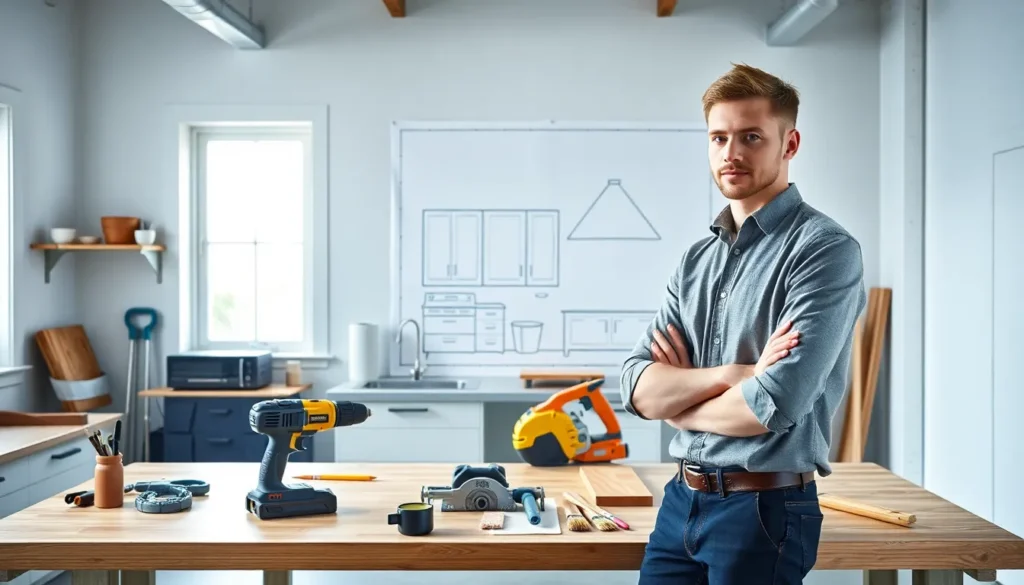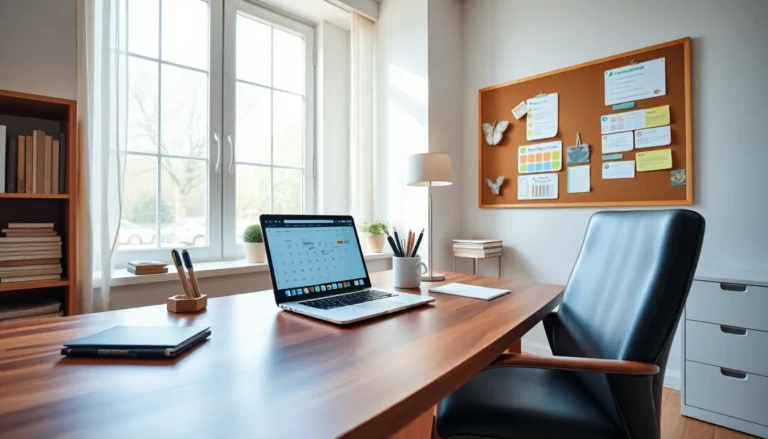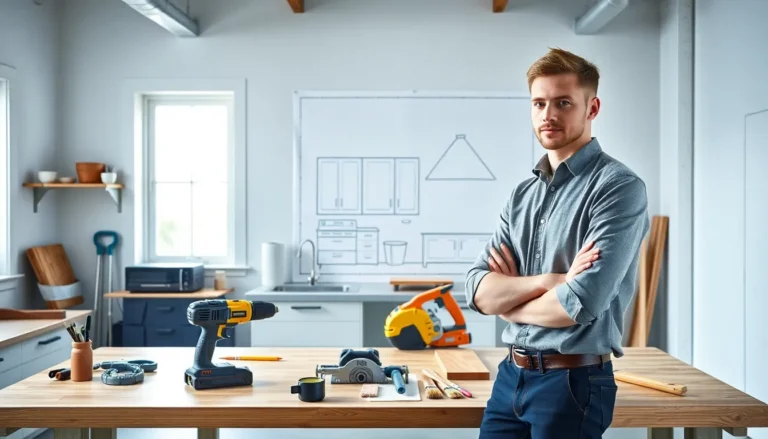Table of Contents
ToggleReady to channel your inner Bob the Builder but feel like you might just end up with a crooked picture frame instead? Fear not. DIY home renovation isn’t just for the experts: it can be for you too, if you have a plan. Whether you’re dreaming of a modern kitchen or simply want to freshen up that outdated bathroom, mastering the art of DIY renovation can save you a heap of cash and provide unmatched satisfaction. Plus, who doesn’t want a personalized space? Let’s jump into essential tips that will help anyone become a renovation rock star.
Planning Your Renovation Project

Before swinging a hammer or rolling out the paint, planning is critical.
Setting a Budget
A clear budget acts like a life vest in the unpredictable ocean of home renovation. Determine how much money can be allocated for the project. This means decent amounts for both materials and labor if help is needed.
Consider some wiggle room, maybe 10-20% extra, since unexpected costs often arise, like needing extra paint for the living room when the DIY store runs out of your shade midway.
Creating a Timeline
Next up is crafting a timeline. Set a completion date but be realistic. Dividing the project into phases can make it feel manageable. After all, Rome wasn’t built in a day, and neither will your perfect bathroom be. Start with the biggest tasks first and schedule smaller tasks around them. Leaving flexibility in your timeline allows breathing room for mishaps, because let’s be honest, there will be some.
Choosing the Right Materials
Selecting the right materials can make or break a renovation.
Essential Tools for DIY Renovation
Having the right tools is like having the right ingredients when cooking: without them, you might just end up with a disaster. Let’s cover some must-haves:
- Power Drill: This makes screw-driving easy-peasy. Invest in both a corded and cordless option for versatility.
- Circular Saw: Essential for cutting lumber and sheet goods.
- Level: Nothing’s worse than a crooked shelf, so a level is indispensable.
- Paint Brushes and Rollers: Look for quality to ensure smooth application.
- Safety Gear: Goggles and a mask are a must when power tools are in use.
Sourcing Materials and Supplies
Materials can often be found at local home improvement stores, but investigating online options is also worth the time. Think about reclaimed wood or secondhand fixtures, which can add charm while also being budget-friendly. Other popular options include big-box stores, specialty stores, and discount outlets. Take time to compare prices and quality to ensure the best deal.
Techniques for Common Renovation Projects
Let’s have some fun exploring common DIY projects that can truly transform your space.
Painting Rooms Like a Pro
Recently painted walls can breathe new life into a room. Always start with quality primer, especially over darker colors. When painting, opt for a roller for large areas, and keep a brush on hand for edges and corners. A little tip? Use painter’s tape. This stuff helps achieve crisp lines that will impress even the pickiest home inspector.
Updating Flooring
Trying to decide between carpet, laminate, or hardwood? Each option has its pros and cons. Laminate can be affordable and easy to install, while hardwood offers a classic look that can increase a home’s value. Always measure floors accurately. Then, simply follow all instructions for the flooring choice and don’t skip the underlayment, if required.
Refinishing Cabinets and Furniture
Outdated cabinets can date even the most modern space. Sanding them down and applying a fresh coat of paint or stain can work wonders. It’s time-consuming but oh-so-rewarding. Furnishing can get the same treatment, showcasing your creative style. Watch a couple of tutorials to nail down the technique, it can often make all the difference.
Safety Considerations
One can never be too cautious. While DIY projects can be fulfilling, safety should always come first.
Protecting Yourself and Your Space
Prioritizing safety means wearing protective gear, no one wants an ER visit for a split finger when a pair of goggles could prevent it. Clear the workspace, ensuring tools are stored securely. Keeping children and pets away can prevent accidents caused by distractions. Plan where everything should go: clutter often leads to mishaps.
Handling Hazardous Materials
Understanding the materials is crucial. Paints, stains, and removal products often contain chemicals that can be harmful if mishandled. Always read labels. Disposal of such materials must be done responsibly: many local stores have disposal programs. Research how to discard these items properly so they don’t harm the environment.







